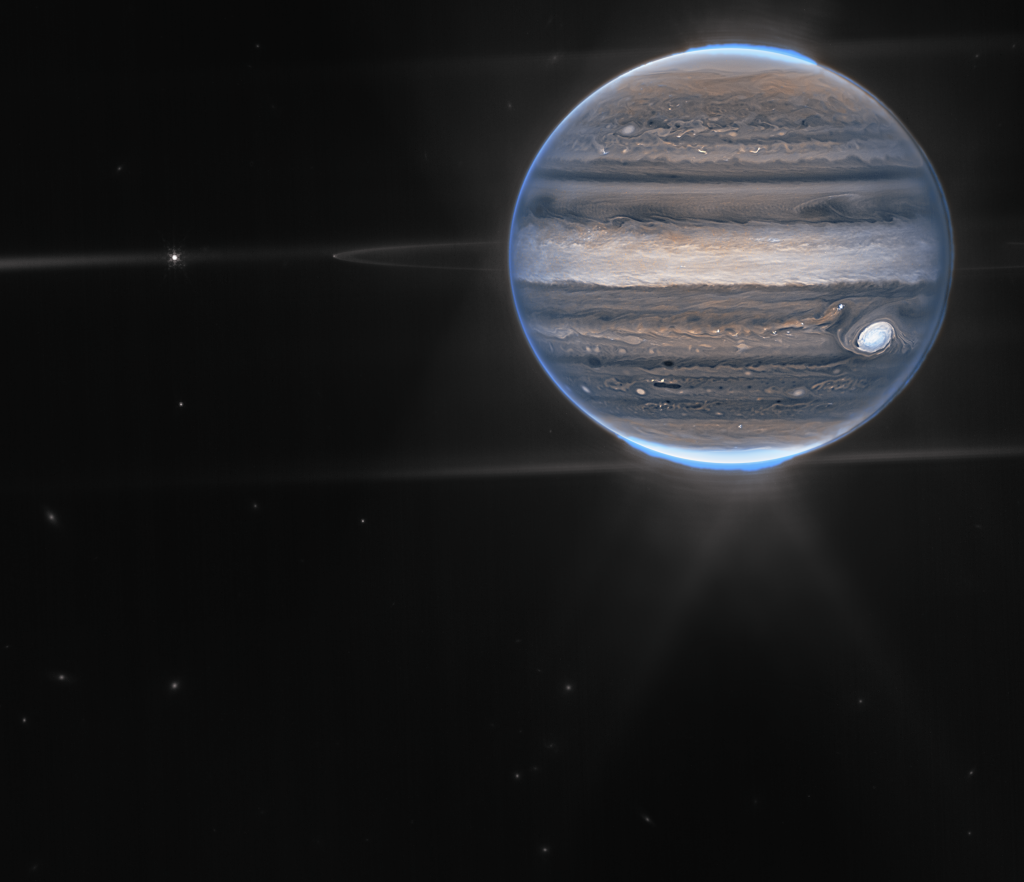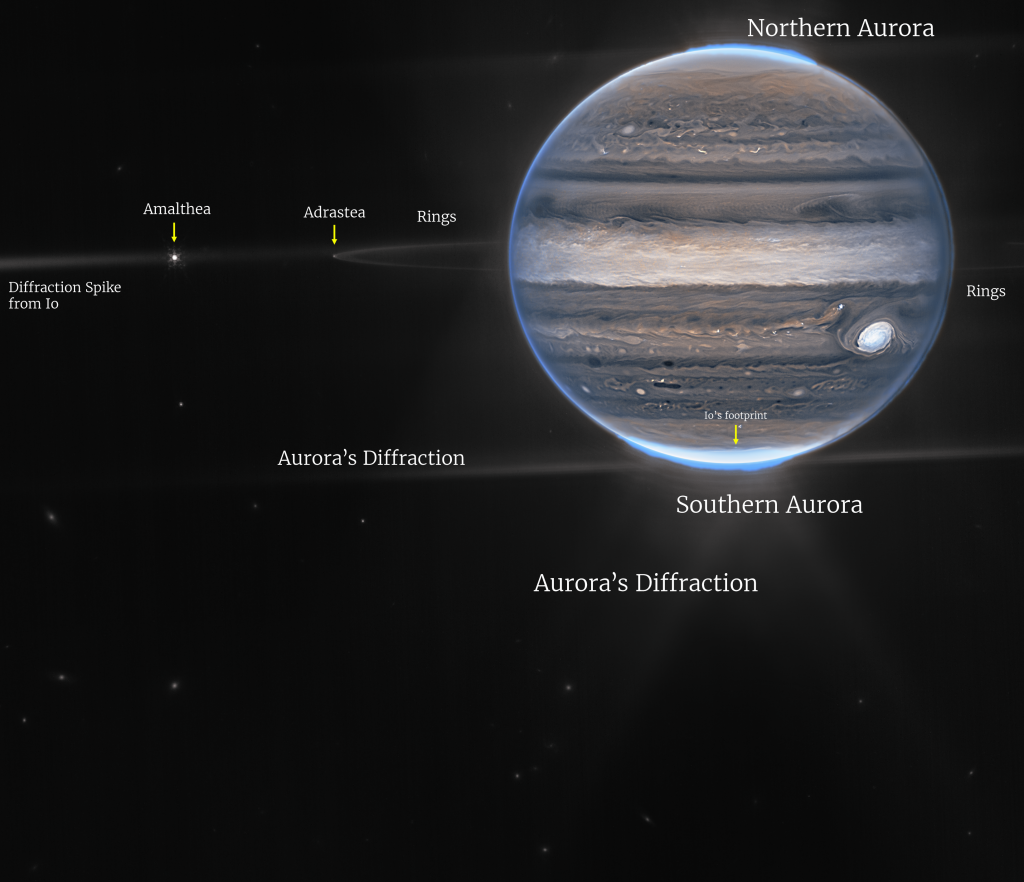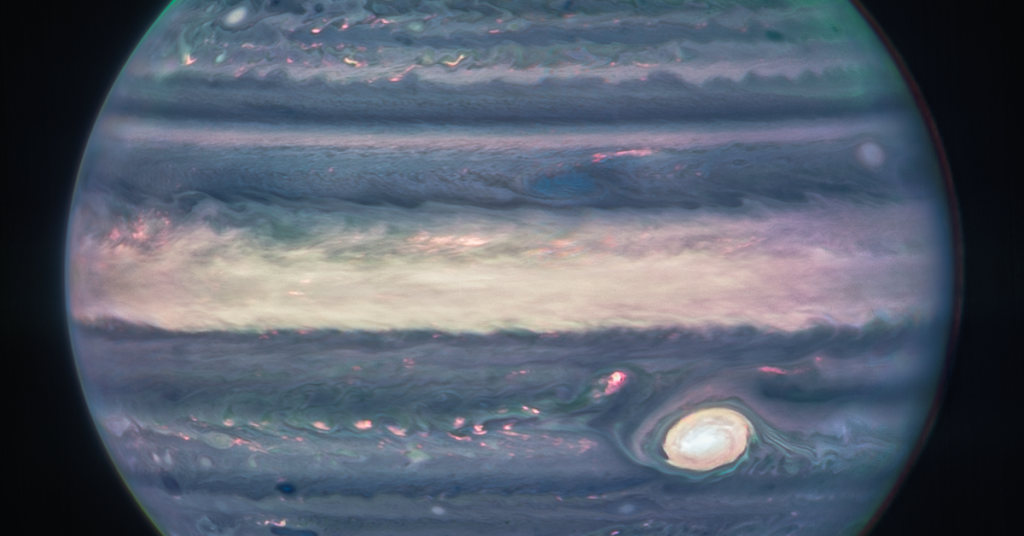Jupiter is a very active planet with a lot going on, including enormous storms, strong winds, auroras, and extreme temperature and pressure conditions. James Webb, a space telescope operated by NASA, has recently taken fresh pictures of the planet. Webb's observations of it will reveal more information about Jupiter's internal life.
CSA and the European Space Agency are partners in the international mission known as Webb, headed by NASA (Canadian Space Agency). Planetary astronomer Imke de Pater, professor emerita at the University of California, Berkeley, said, "To be honest, we hadn't expected it to be this good. As part of a global partnership for Webb's Early Release Science program, De Pater co-led the observations of Jupiter with Thierry Fouchet, a professor at the Paris Observatory. She remarked that it was truly amazing to see details of Jupiter, along with its rings, minuscule satellites, and even galaxies, in a single image.
The observatory's Near-Infrared Camera (NIRCam), which has three specialized infrared filters, produced the two images. The visible spectrum has been used to map infrared light since it is invisible to the human eye. In general, the bluer and longer wavelengths are shown, with the longer wavelengths appearing redder. To turn the Webb data into images, scientists worked with citizen scientist Judy Schmidt.
Auroras can be seen extending to great heights above Jupiter's northern and southern poles in the standalone view of the planet made from a composite of several Webb images. Lower clouds and upper hazes reflect the light from the auroras, which is also highlighted by a filter mapped to redder colors. A different filter with a yellow and green color mapping displays hazes swirling around the poles. The light reflected from a deeper main cloud is shown by a third filter, which is blue-mapped.
Due to their high levels of sunlight reflection, the Great Red Spot, a famous storm so large it could swallow Earth, and other clouds appear white in these views.
The Great Red Spot has high-altitude hazes, just as the equatorial region does, according to Heidi Hammel, Webb interdisciplinary scientist for solar system observations and vice president for science at AURA. The many bright white "spots" and "streaks" are probably very high-altitude cloud tops from condensed convective storms. However, there are dark ribbons that are mainly cloudless north of the equatorial region.


Webb observes Jupiter with its faint rings, a million times lighter than the planet, and two tiny moons known as Amalthea and Adrastea in a wide-field view. Galaxies that are "photobombing" this Jovian view are most likely the fuzzy spots in the lower background.
The dynamics and chemistry of Jupiter, its rings, and its satellite system are all studied by our Jupiter system program, which, according to Fouchet, is represented by this image. Researchers have already started analyzing Webb's data to learn new scientific information about the giant planet in our solar system.
The information from telescopes like Webb doesn't come in a tidy package to Earth. Instead, it includes details about the intensity of the light detected by Webb's detectors. The Space Telescope Science Institute (STScI), Webb's mission and science operations center, receives this data as raw data. The data is calibrated by STScI and sent to the Mikulski Archive for Space Telescopes for distribution after processing. While a team at STScI formally prepares Webb images for publication, citizen scientists or amateur astronomers frequently search through the public data archive to retrieve and process images. In their research, scientists translate that data into pictures like these (here's a podcast).
Veteran citizen scientist Judy Schmidt of Modesto, California, processed these new views of Jupiter. She worked with Ricardo Hueso, a co-investigator on these observations who researches planetary atmospheres at the University of the Basque Country in Spain, to create the image that shows the tiny satellites.
Schmidt lacks any formal training in astronomy. But ten years ago, she discovered her unquenchable passion for image processing through an ESA contest. The public was encouraged to sift through Hubble data for new gems as part of the "Hubble's Hidden Treasures" contest. Out of almost 3,000 entries, Schmidt's photograph of a newborn star won third place.
She has been working on Hubble and other telescope data as a hobby since the ESA competition. Every day, "I could spend hours and hours." she explained, "Something about it just stuck with me, and I can't stop."
She processed images of nebulae, globular clusters, stellar nurseries, and other more amazing cosmic objects because she loved astronomy images. "I try to get it to look natural, even if it's not anything close to what your eye can see," is her guiding principle. Professional astronomers have taken notice of these images, including Hammel, who worked with Schmidt to improve Hubble images of comet Shoemaker-Levy 9's impact with Jupiter.
Because of how quickly Jupiter rotates, Schmidt claims it is more challenging to study than farther-flung celestial wonders. When Jupiter's distinctive features have rotated and are no longer aligned since the images were taken, it can be challenging to combine a stack of images into a single view. To stack the images logically, she occasionally needs to make digital adjustments.
Schmidt would be most excited about more Webb views of star-forming regions, even though Webb will provide observations about every stage of cosmic history. Herbig-Haro objects, tiny nebula patches with powerful jets produced by young stars, particularly fascinate her. She said, "I'm excited to see these strange and wonderful baby stars blowing holes into nebulas.
